|
HOME: www.hiltonpond.org |
|||
THIS WEEK at HILTON POND Subscribe for free to our award-winning nature newsletter (Back to Preceding Week; on to Next Week) |
All text, maps, charts & photos © Hilton Pond Center A DAY IN THE LIFE We don't cut much grass at Hilton Pond Center--we decided long ago that managing an 11-acre lawn would be environmentally irresponsible and a huge waste of time--so we run the riding mower only when we groom our walking trails or maintain minimal open space around the old farmhouse. We're laissez-fair with our tiny front yard each spring, preferring to see what plants might pop up beneath the spreading oaks. Years ago before the canopy filled in we'd get a plethora of sun-loving flowers, but this year we're down to a little White Clover, Dandelions, Oxalis, and a half-dozen four-foot-tall Daisy Fleabanes--a native species that we believe is too often taken for granted or ignored. North America hosts several species of this white and yellow member of the Composite Family (Asteraceae); apparently the only one growing around Hilton Pond is Eastern Daisy Fleabane, Erigeron annuus (above), All text, maps, charts & photos © Hilton Pond Center
All text, maps, charts & photos © Hilton Pond Center Like other composites, Daisy Fleabane is made of two kinds of flowers: 1) an outer ring of typically showy but sterile ray flowers (mistakenly called petals) that attract the attention of potential pollinators; and, 2) a central concentration of fertile disk flowers that offer nectar and produce seeds when fertilized. In the case of Daisy Fleabane, one might expect pollinators be on the small size, and that was certainly the case this week at Hilton Pond. In fact, the biggest pollinating insect we observed measured only three-eighths of an inch stem to stern--a very long-legged fly (above, unidentified but likely in the Dolichopodidae), that probed fleabane disk flowers with a proboscis nearly as long as its walking appendages. Even though people often think non-native Honeybees are the only pollinators that matter, vast varieties of native bees, flies, wasps, and other insects are of equal or greater importance--especially since some native plants have coevolved with specific pollinating agents.
All text, maps, charts & photos © Hilton Pond Center One pollinator we could identify at least to family was one of the Hoverflies (above), which entomologists prefer to call Flower Flies because of their active pole in the pollination process. These insects are in the Syrphidae, a family that includes more than 6,000 species--quite a few like the harmless one above that avoid predation by mimicking dangerous stinging insects such as bees and wasps. We still like the name Hoverfly because they really do just that, flapping their wings rapidly and maintaining a stable position for extended periods. (Beatriz Moisset wrote to say the Hoverfly in our photo above is a species of Toxomerus, a rather large syrphid genus.)
All text, maps, charts & photos © Hilton Pond Center During our day of watching front-yard Daisy Fleabanes at Hilton Pond, we discovered each multi-flowered plant was a little ecosystem, complete with its own complement of critters. Most organisms were NOT pollinators like the two flies above; some were other arthropods dining in some way or fashion on fleabane flowers, pollen, or foliage. In one case we never actually saw the foliovore but deduced its presence from brownish lines on an otherwise green two-inch-long fleabane leaf (above). These were tell-tale feeding tracks left by larvae of one of the Agromyzidae--the family for Leaf-miner Flies that have wing lengths as small as one-sixteenth of an inch. After being deposit on the fleabane leaf, the egg hatches and the grub begins eating its way through the juicy inner leaf mesophyll, avoiding less nutritious upper and lower epidermis layers that contain harder cellulose. In the photo above, the larva appears to have hatched near the tip of the leaf and moved toward the base, eating out a tunnel of ever-increasing diameter as its own size increased. (NOTE: Leaf mining behavior also occurs among larva of various moths, beetles, and sawflies, some of which leave distinctive, diagnostic trails.)
All text, maps, charts & photos © Hilton Pond Center Although larvae of Leaf-Miner Flies are barely macroscopic, much larger insects also like to chow down on Daisy Fleabane's succulent parts. We found an inch-long example (above) at the Center that we're calling an immature male Slender Meadow Katydid, Conocephalus fasciatus. (CAVEAT: Many species of meadow katydids are quite similar in appearance; we went with our identification because of the specimen's green face and very long wings. If you have a better I.D. for this or any unidentified organism on this page, please send it to INFO.) Many observers would call this critter a locust but it's actually in the Tettigoniidea, an infraorder that includes so-called "long-horned grasshoppers" such as katydids and camel crickets with antennae longer than their bodies. Slender Meadow Katydid feeds on leaves, flowers, pollen, and seeds of grasses and forbs, occasionally preying on other smaller insects. (By the way, that dark spot on the katydid's front "knee" is its ear, attuned to stridulating calls of other males of his species.)
All text, maps, charts & photos © Hilton Pond Center On a stem of another Daisy Fleabane we found a small brown object (above) about three-eighths of an inch long. It was tightly plastered to the stem, so at first we wondered if it might be an egg mass. However, when we looked closer the two antennae-like structures on the left end gave us another thought: Some sort of mini-caterpillar.
All text, maps, charts & photos © Hilton Pond Center As we zoomed in with the macro lens to photograph the object, we noticed what appeared to be an obscure brown eyespot on the right end, suggesting that the terminus with the two appendages was the posterior. We clicked away with our camera and watched with interest as an unidentified green aphid (above right) strolled stiffly into view.
All text, maps, charts & photos © Hilton Pond Center In a flash the brown thing grabbed the aphid with what seemed like an awfully big mouth and wrestled mightily as it tried to swallow its struggling prey--a small-scale tableau every bit as violent and natural as a pride of African Lions bringing down a Wildebeest. It was then we knew the brown object was undoubtedly the larva of one of those Hoverflies (Flower Flies) mentioned above. (NOTE: It may be the larva wasn't actually swallowing the aphid but puncturing it and ingesting its bodily fluids.) In any case, such insects should be best friends to any gardener because their larvae eat aphids while adults pollinate flowers. Protecting such beneficial insects that provide biological controls is yet another reason NOT to use broad-spectrum insecticides in your home garden.
All text, maps, charts & photos © Hilton Pond Center Despite the ravenous work of Hoverfly larvae, we found dozens of aphids--including numerous unidentified brown ones (above) clustered on fleabane sepals. Although these little insects were scarcely the size of a pinhead, if they were using their piercing mouth-parts to suck sap as most aphids do then their sheer numbers were bound to have some impact on their host.
All text, maps, charts & photos © Hilton Pond Center On several of the Center's Daisy Fleabanes these brown aphids were in flower centers rather than on sepals or stems. Out of curiosity we snipped one of these flowers and brought it indoors where wind-induced movement didn't complicate our photography. On the banding desk we set up a tabletop tripod, a light, and a powerful Canon 1x-5x macro zoom lens for closer examination. As suspected, high magnification revealed this unperturbed aphid (above) had its proboscis inside a fleabane flower from which it appeared to be taking nectar. At the same time its tiny exoskeleton was festooned with even tinier grains of pollen, leading us to believe these otherwise-destructive aphids may serve equally well as Daisy Fleabane pollinators. Incidentally, notice the two posterior appendages on this aphid; these are siphunculi, from which pheromones are emitted. Among other things, entomologists believe such species-specific chemicals alert other aphids to the presence of predators or parasitoids. (NOTE: After we posted this installment, reader Dean Morewood wrote to suggest the brown aphids were actually dead aphid "shells" occupied by parasitoid wasp larvae.)
All text, maps, charts & photos © Hilton Pond Center We were serious when we said there were herds of Daisy Fleabane aphids at Hilton Pond Center. As evidence we offer the photo above, with all those aphid legs hanging over the edges of the white ray flowers. There's another aphid at the bottom rim of the disk flowers, but it seems in the process of having all its innards sucked out by a big black unidentified True Bug above it. This typical True Bug (Hemiptera) does indeed have a stylus-like sucking mouth structure--plus a partly membranous forewing and a triangular scutellum at the center of its back. Chalk up another tally for predators in the Daisy Fleabane predator-prey competition.
All text, maps, charts & photos © Hilton Pond Center Although our Daisy Fleabane patch provided ample evidence that Hoverfly larvae and some True Bugs munch regularly on aphids, marquee predators that get all the publicity for controlling aphid populations are larvae of Ladybird Beetles. Sure enough, when we examined several fleabane stems we encountered several quarter-inch prickly bodied ladybug larvae. Interestingly, however, these were not immature forms of native ladybugs but those of the Asian Lady Beetle, Harmonia axyridis, intentionally imported because of their nearly insatiable aphid- and scale- eating diet. (Unfortunately, they also eat the larva of native ladybugs.) Despite serving as a valuable biological control, this ladybug species has few North American predators, so it shouldn't be a surprise that each fall they congregate in homes and other human structures--sometimes in annoyingly large, odoriferous masses.
All text, maps, charts & photos © Hilton Pond Center The ladybug nymph was interesting, but an even more brilliantly colored immature organism was on another fleabane plant; this time it was a red and black Wheel Bug nymph, Arilus cristatus, of the Reduviidae. This half-inch-long insect (above) is an example of aposematism--when bright hues warn potential predators that attacking this prey item will result in unpleasant consequences. In this case the immature Wheel Bug sends a clear message: 1) I secrete a chemical that is quite noxious; and, 2) I am equipped with a very sharp and disproportionately large mouthpart capable of inflicting a painful bite. After avoiding the palates of some bird or insect, the Wheel Bug nymph uses its sharp stylus in predatory fashion, stabbing and sucking life fluids from caterpillars and other small arthropods. Facilitating this behavior is the Wheel Bug's toxic saliva that paralyzes and kills its prey in 15-30 seconds. Moral of this story: Don't handle nymphal or adult Wheel Bugs, but welcome both as biological controls. (NOTE: Wheel Bugs are reportedly one those few predators that eat "hairy" caterpillars of moths that damage agricultural crops--yet another example of effective biological control.)
All text, maps, charts & photos © Hilton Pond Center Within Hilton Pond Center's Daisy Fleabane patch, Wheel Bug nymphs were not the only predators armed with toxins. In fact, we found three different kinds of spiders lying in wait for unsuspecting prey. (NOTE: All spiders are venomous, but not all are able to bite or harm humans.) The first of these eight-leggers was a metallic-looking, female Orchard Spider, Leucauge venusta (above), that hung horizontally under a slender silken strand between two fleabane stems. This species has a body (excluding legs) about a quarter inch long; colors and patterns are highly variable. In our individual the green hemolymph--arthropod blood--is visible in the proximal leg sections. Orchard Spiders are classified in Tetragnathidae (Long-jawed Spider Family) and have a wide distribution from Canada to northern South America.
All text, maps, charts & photos © Hilton Pond Center Another chunkier arthropod was laying low on a neighboring Daisy Fleabane plant--this time a female Cross Spider, Araneus diadematus (above), with a body barely one-eighth of an inch long. Although the Orchard Spider described previously spins a circular web, the Cross Spider is a true orb-weaver in the Araneidae. Also called Diadem Spider or Crowned Orb-weaver, we prefer "Cross Spider" because of the light-colored cross-shaped marking on the spider's abdomen. The individual in our photo was obviously a good web-spinner and successful predator, as shown by several eviscerated mummies--the last remains from past prey.
All text, maps, charts & photos © Hilton Pond Center Our third spider was from our favorite arachnid family, the Thomisidae, also known as Flower Crab Spiders. We didn't have a precise identification for this specimen--undoubtedly a species of Misumena or Misumenoides--but her behavior and general morphology left no doubt about what family she was in. Called Crab Spiders in part because they scoot sideways and backwards, these predators hold their long front legs in crab-like posture, just waiting for some unsuspecting prey item to happen along. When the prey ventures with reach, the Crab Spider grabs with its front legs and almost instantly brings the future meal in close. The spider bites and injects paralytic venom that also helps digest the prey's internal tissues and fluids--making it all the easier to suck up supper. Pollinators and foliovores, nectar eaters and sap suckers, predators and prey. We hope you are as fascinated as we were by the diversity and complexity of nature on a half-dozen seemingly simple Daisy Fleabanes at Hilton Pond Center. Such tableaus occur every day and everywhere in nature, of course, but we humans are often too busy or too distracted by other things to smell the roses or look closely at Daisy Fleabane. Just think what drama and intrigue we're missing! All text, maps, charts & photos © Hilton Pond Center
Checks can be sent to Hilton Pond Center at: All contributions are tax-deductible on your |
|---|
|
"This Week at Hilton Pond" is written and photographed by Bill Hilton Jr., executive director of Hilton Pond Center for Piedmont Natural History
|
|
|
Please refer "This Week at Hilton Pond" to others by clicking on this button: |
Comments or questions about this week's installment? Send an E-mail to INFO. (Be sure to scroll down for a tally of birds banded/recaptured during the period, plus other nature notes.) |


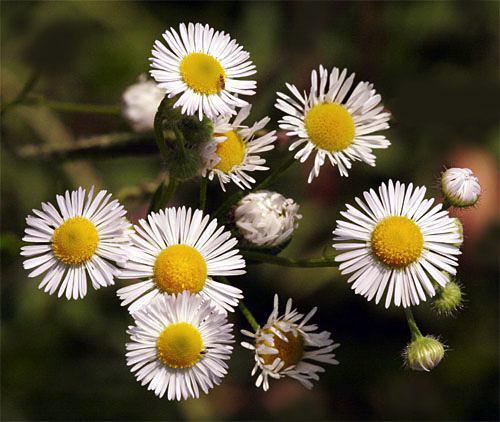
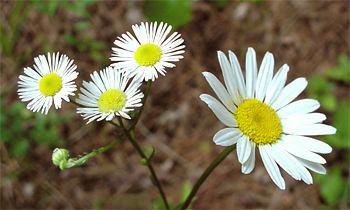 found in 43 of 48 contiguous states and in southern Canada. It's distinguishable from its congeners by lots of leaves that are coarsely toothed, especially the basal ones. An annual--sometimes biennial--it gets its name from the belief its foliage could repel fleas . . . and from its resemblance to Ox-eye Daisy,
found in 43 of 48 contiguous states and in southern Canada. It's distinguishable from its congeners by lots of leaves that are coarsely toothed, especially the basal ones. An annual--sometimes biennial--it gets its name from the belief its foliage could repel fleas . . . and from its resemblance to Ox-eye Daisy, 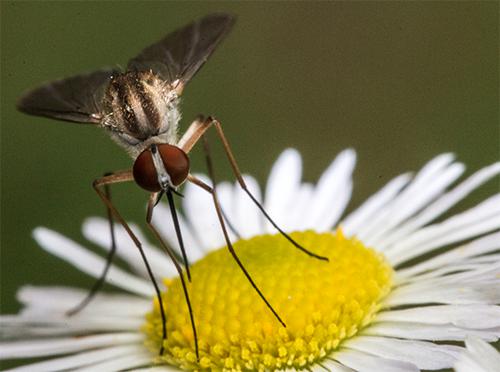

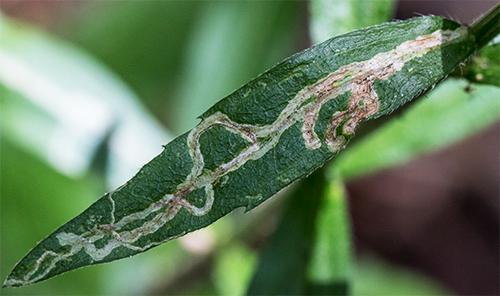
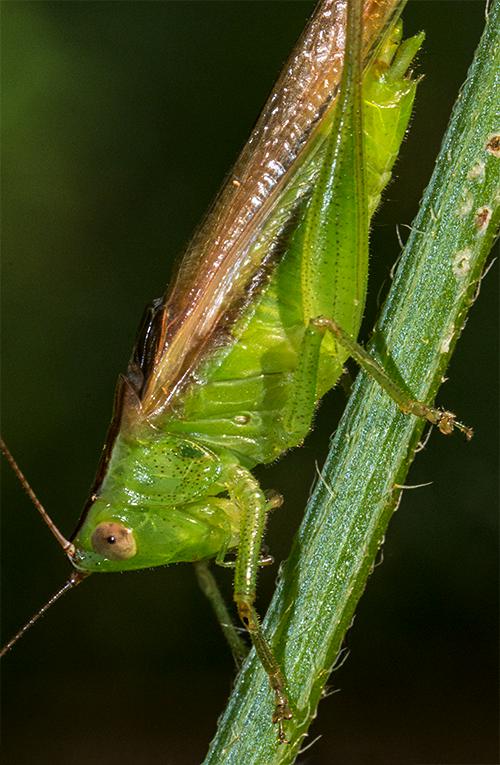
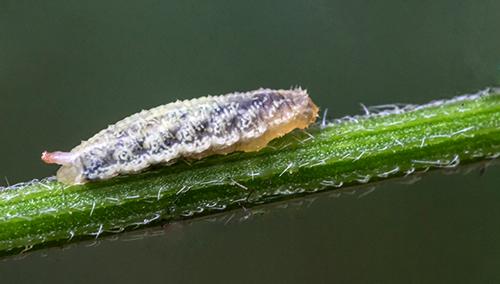

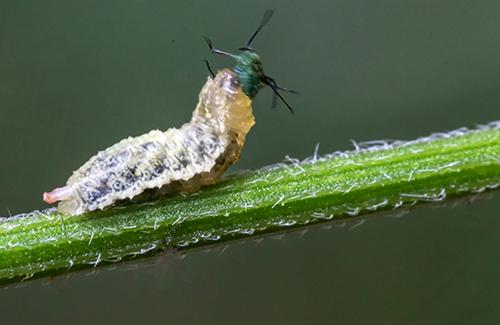
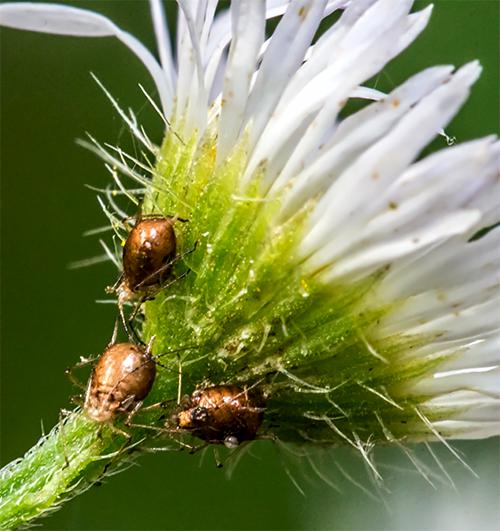

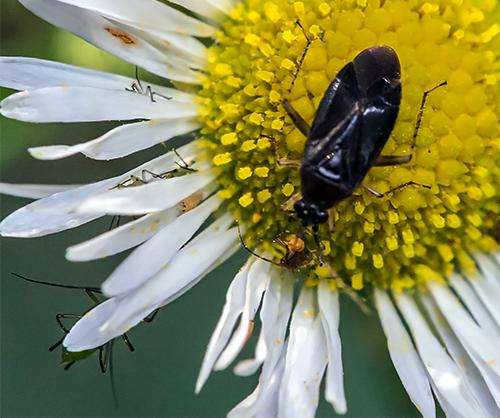
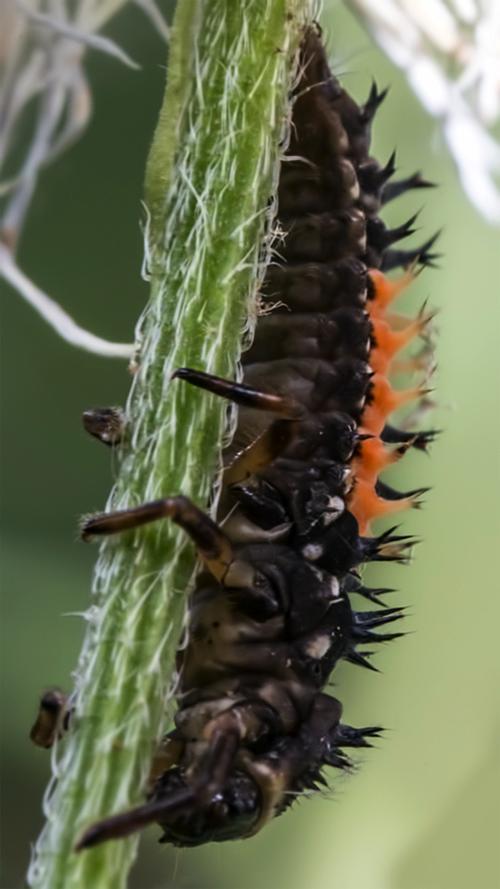
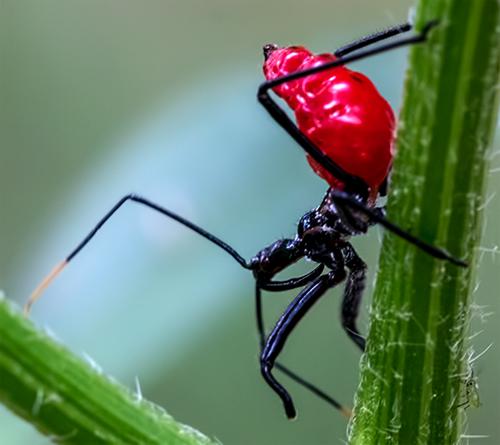

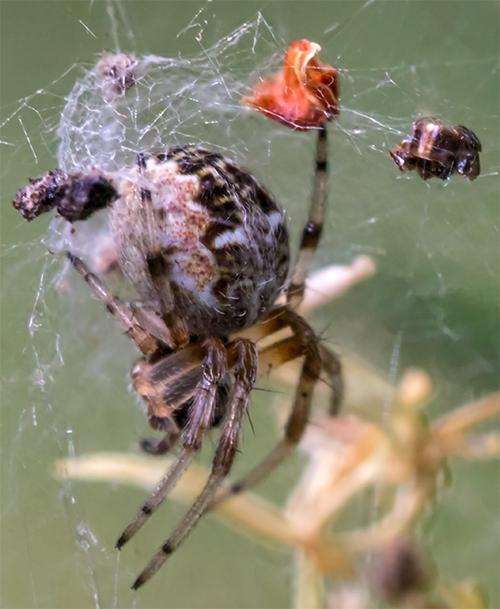
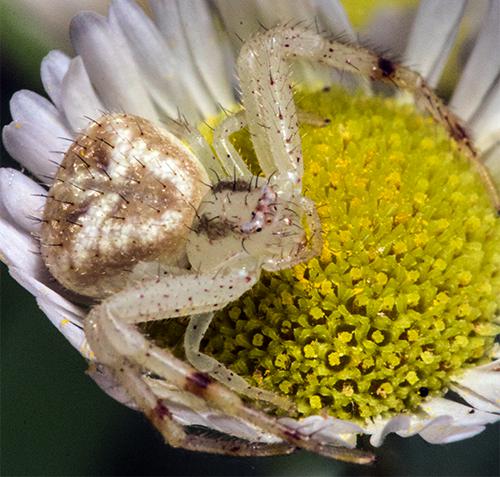









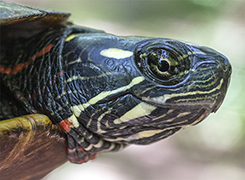
 Please report your
Please report your